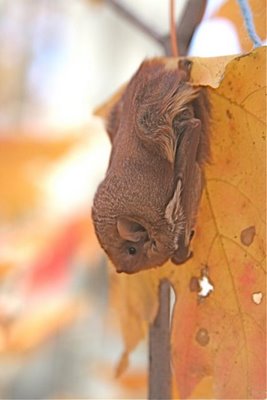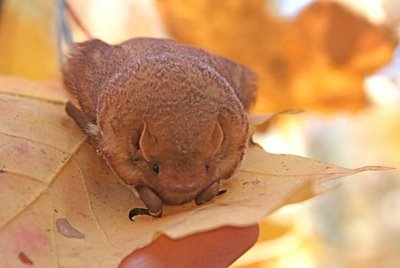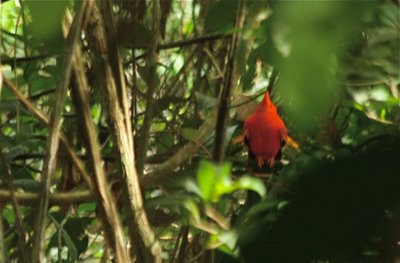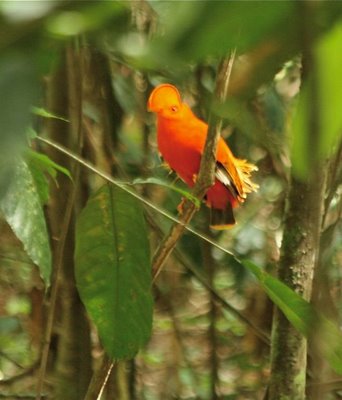Just being in the woods with 25 people is an experience. The ways in which I normally sense things have to be recalibrated. Because 25 people make a lot of noise, listening for birdcalls or tiny scufflings in the leaves is out. But I can still look, and 25 pairs of eyes can look, too. We looked at an old hickory that had been struck by lightning, and was now healing along the blaze mark, wrapping fresh wood around a rotting inner core.
I decided to ask the students to look at the woods through the eyes of a worm-eating warbler. Worm-eating warblers (here's one of my drawings of a female tending her nest)
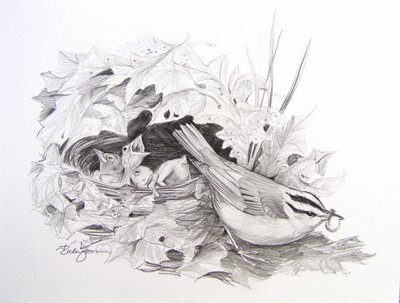
specialize in finding insects, spiders, egg sacs and larvae hiding in hanging dead leaf clusters. Until you look at the woods through a worm-eating warbler's eyes, you'd never dream how many hanging dead leaf clusters you could find to plunder for food. So I asked the kids to think like a bird, a bird which makes its living clinging upside down to dead leaf clusters, looking for whatever lives inside them. We went from cluster to cluster, prying them apart and seeing what was inside. And there was a spider or an egg sac in nearly every one. Calls of "I found one!" rang out through the golden woods. And then came the call from Caitlin Adams: "I found a BAT!"
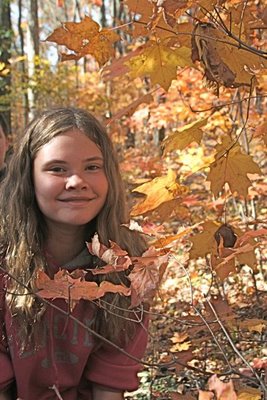
Everyone froze and hurried over to Caitlin's side. She had indeed found a bat, hanging upside down right beside a leaf cluster. Well, how about that! A bat. A BAT!! And not just any bat, but a Red Bat. My Favorite Bat of All. One I have seen countless times, but only on the wing. Oh, how I have longed for a better look at a red bat. And now, thanks to Caitlin and Mrs. Newman and Clermont Northeastern Middle School which owns these beautiful woods she helped to save from the lumber mill, here was a red bat hanging right at eye level from a sugar maple leaf for all the world to see.
Lasiurus borealis is one of the tree bats, family Vespertilionidae. Red bats occur across the eastern two-thirds of North America, and they are more common than you'd think, but they don't live in colonies; they're solitary. They migrate south just like birds when it gets cold, though with their luxuriant cinnamon-colored fur, they have much greater cold tolerance than most other bats. In Ohio, we see them most often in late October and early November, as they make their way south. If you see a bat flying around alone on a cool autumn evening, or even during bright daylight in fall, it may be a red bat. They roost, often hanging by one foot, and look remarkably like a hanging dead leaf or pine cone. Females may have up to five young at a time, and she flies with them clinging to her belly, and when they're old enough to hang up she leaves them hanging while she forages, then flies back to nurse them. Imagine a female red bat hanging her babies up and then coming back to nurse them. It's a scene right out of
Stellaluna. Red bats are actually pretty large bats, as bats go, with a body length of around four inches and wingspans of up to 13". When it's really cold they ball themselves up inside their furry tail membrane, looking like almost nothing at all.
Gently, I tipped the leaf so the kids could see the bat's face, and the weakened leaf petiole, about ready to let go anyway, snapped off in my hand. After a moment of panic--I have a bat in my hand! What am I going to do with him now? Unhook his feet and hang him up somewhere else?-- it occurred to me that in the 100 or so pockets of the kids surrounding this bat there might be a bread wrapper or a piece of string. Sure enough, Tierra pulled a bit of blue yarn out of her jeans pocket. Another student held the leaf while I tied the yarn around the stem and then around a twig on the little maple tree. Voila. The bat was safely hanging once again. Phewww.
It is hard to overstate the concentrated cuteness of a red bat. Hanging head down, he didn't look like much. Maybe like a hamster, with that unusual cinnamon brown, silky fur.
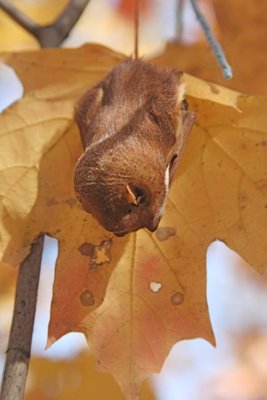
But I insisted that even the kids who were a little shy about bats come forward and have a look at his face.
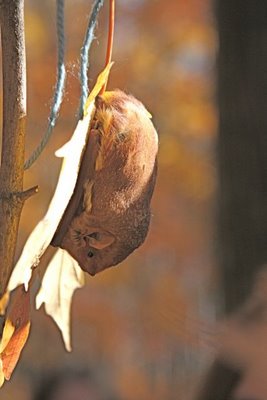
And it was there, eye to eye, that the true connection between these kids and this bat was forged. It is impossible to be afraid of an animal this adorable, no matter how bad the advance press on bats might be.
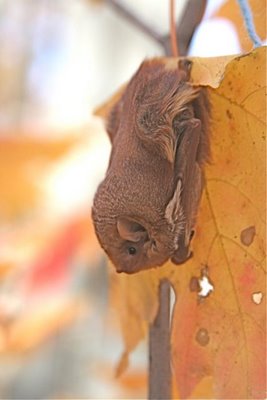
Along his side, just above the wing, was a stripe of creamy fur that seemed almost too lovely to be true. We all wanted so badly to stroke that satin fur, but we didn't want to scare him any more than we already had. For those who have internalized all the myths about bats and who recoil in horror at the thought of touching one, rest assured that no one but me got closer than a hand's length to the animal, and I stayed with it as long as the students were present.
You have been warned. The bat pictures in this post will increase in adorability until your face melts.
Every once in awhile he'd raise his head and look around in wonder at all the faces staring back into his.
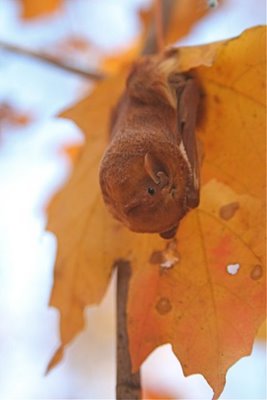
Once, when we got a little too close, he gaped at us, a little warning, but even that was pretty cute.
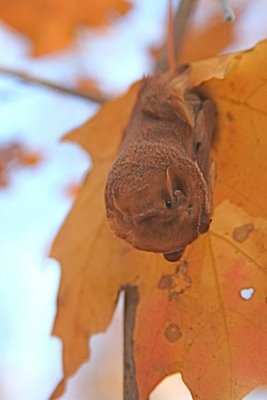
All the while, I told the kids what I knew about red bats. The nice part for me was that we ignored, never deigned to mention, skipped completely over the old wives' tales about bats--that they get tangled in your hair, that they all carry rabies, that they are evil, bloodthirsty, black-hearted flying mice...none of which are true, and none of which obviously applied to this enchanting little creature. No, we leapt right to the infatuation phase in our relationship with this bat.
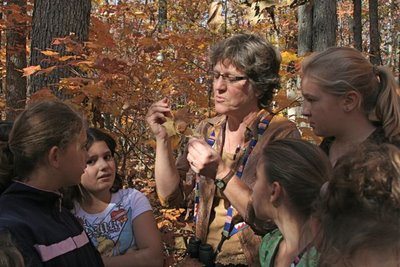
Everyone wanted their picture taken with the famous red bat (who looks like a chicken nugget in this picture, hanging right in front of one kid's face on the left side of the photo). I wish I could post all my pictures, and I apologize to anyone who was there but feels left out. There were permissions forms involved...it got complicated. Thank you, Sherri and the other teachers and students who raced to get written parental permission, for making publication of these photos possible.
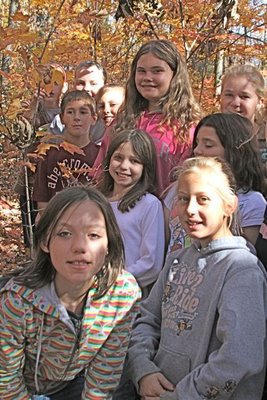
Caitlin the Bat Locator is the tall girl in pink, and Tierra's right in front of her, in white. She gave me yarn, and reminds me of hauntingly of my niece, Christy. I had to stop myself from scooping her up and hugging her.
Although cellphones aren't supposed to come out during school hours, Mr. Blake
made an exception. It's not every day you get to say hello to a red bat.
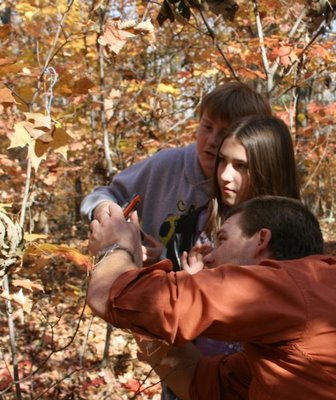
A whole bunch of photos later, it was finally time to turn back toward school. We'd no sooner gotten in the doors than Mr. Blake gathered several teachers and headed back out to show them the little vespertilionid. That was one of my favorite moments of the day. I had no sooner returned from my third field trip than I turned right around and took a fourth, impromptu group out to see it. Then Sherri Newberry took two more groups. It was that special, that irresistible. The whole school caught red bat fever that golden November day.
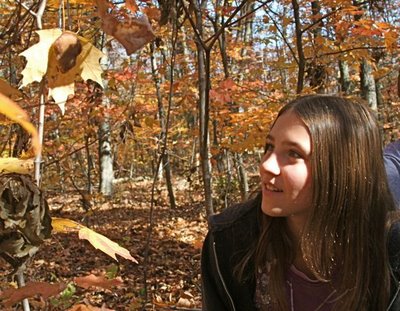
Bridget was so completely enchanted that she couldn't leave. I knew a girl like that once.
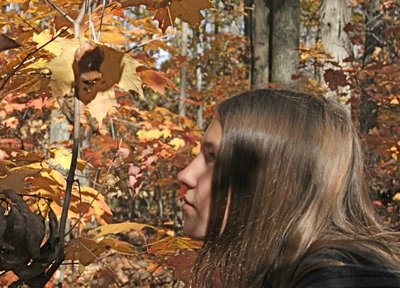
I don't know what she'll become when she grows up, but something rare passed between Bridget
and the bat. I would imagine that teachers never get used to seeing a life change before their eyes, and that's what keeps them working and grading papers long into the night.
Thank you to Pam Murphy, Sherri Newberry, Melody Newman and Stephen Blake for making my visit so rich and for preparing the students so well, so that they could hear what I had to say. Thank you to Nick Adams for building the blind, and to his younger sister Caitlin for finding the bat. (Coincidence? I think not). Thank you to the students for loving the bat every bit as much as I did, for being willing to look into its face, to connect with its small furry soul and imagine what it must be thinking and feeling. Thank you for reading my work and looking at my paintings and photographs, and for the nice messages you've sent me. And thank you to Clermont Northeastern Middle School for protecting the pond and woodlot, for these seemingly simple landscape features provide habitat for all creatures great and small, and by their presence afford limitless opportunities for learning and spiritual renewal to your students.
I have yet to see a parking lot or a pile of lumber that can do that.
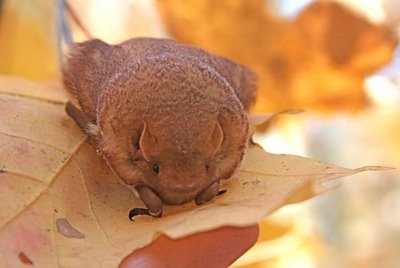
Labels: author visit, Clermont Northeastern Middle School, grassroots conservation, red bat, why kids need nature

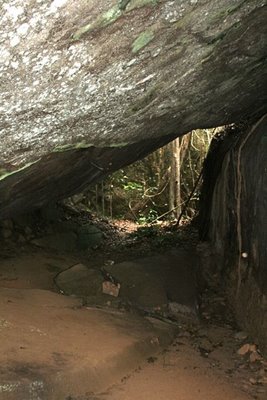 It's one thing to see a life bird. It's quite another to get a little glimpse into its life. Although I didn't know it when we entered this little cave, there was a cock of the rock nest pasted to the wall, phoebe-style.
It's one thing to see a life bird. It's quite another to get a little glimpse into its life. Although I didn't know it when we entered this little cave, there was a cock of the rock nest pasted to the wall, phoebe-style. 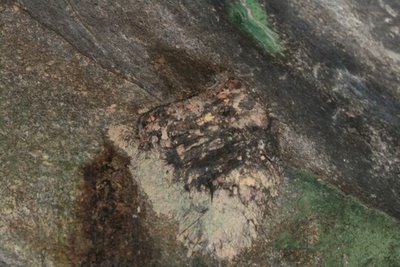
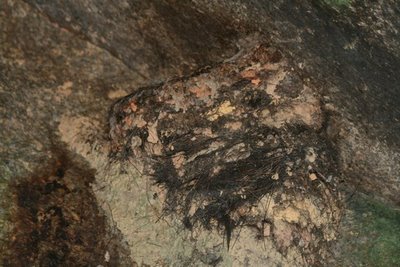
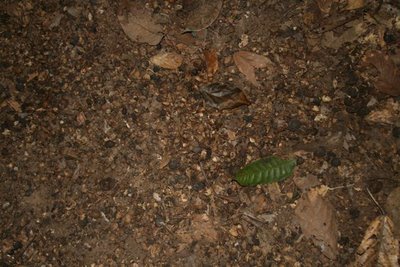
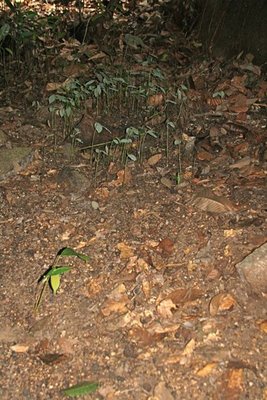
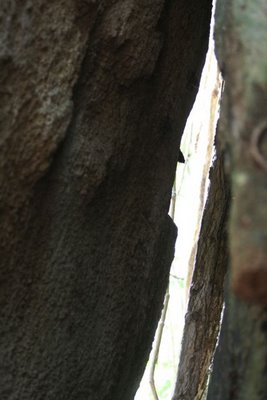
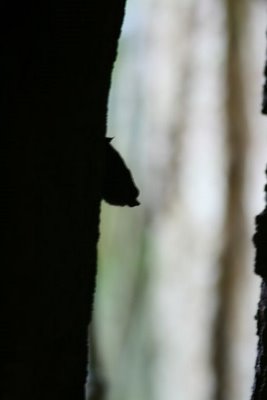
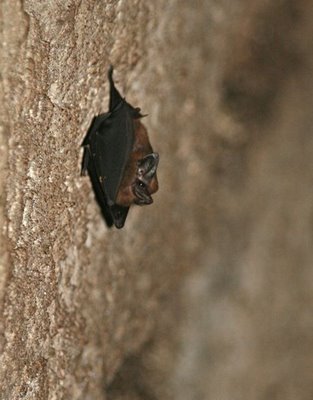
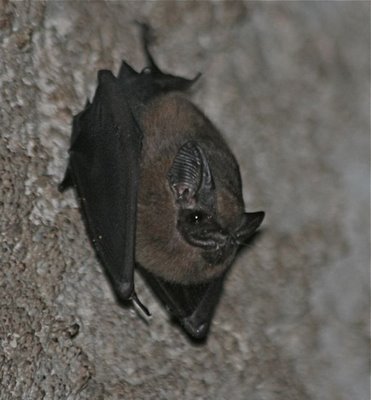 I was reminded of the captivating red bat my friend Caitlin found on our field trip into the forest behind Clermont Northeastern Middle School in southwest Ohio, way back in November.
I was reminded of the captivating red bat my friend Caitlin found on our field trip into the forest behind Clermont Northeastern Middle School in southwest Ohio, way back in November.